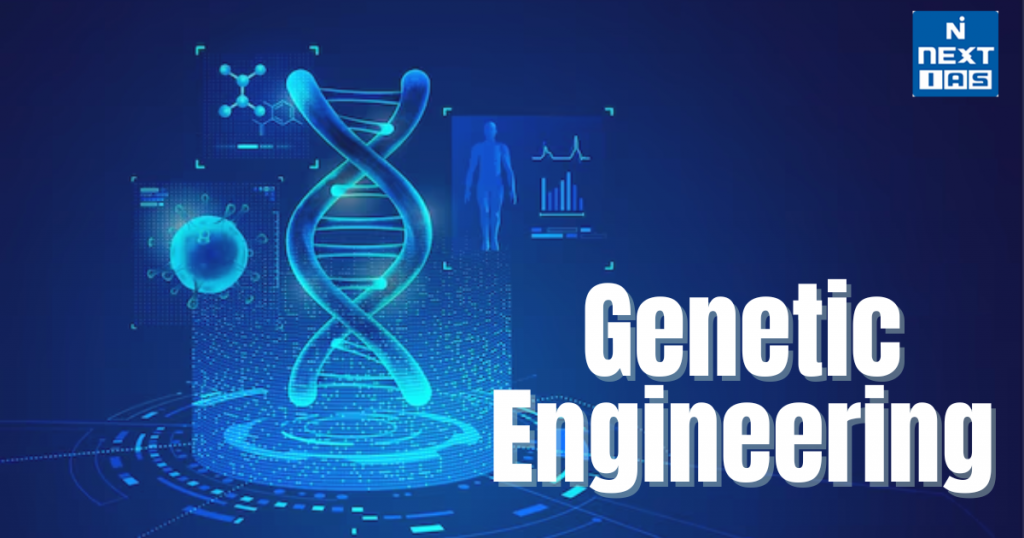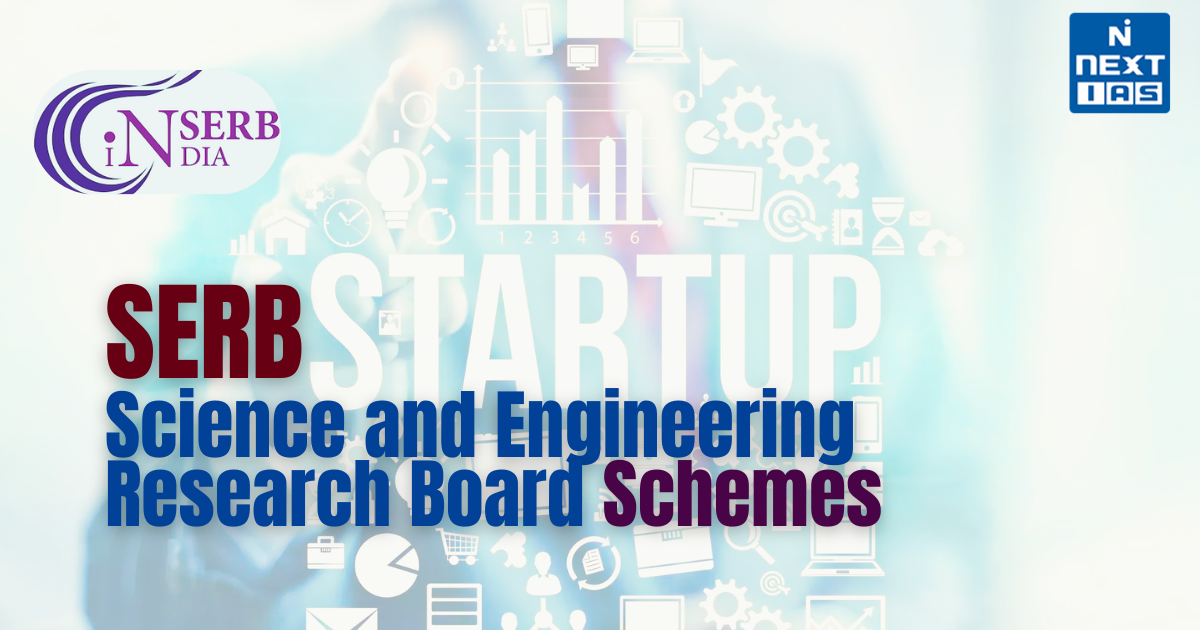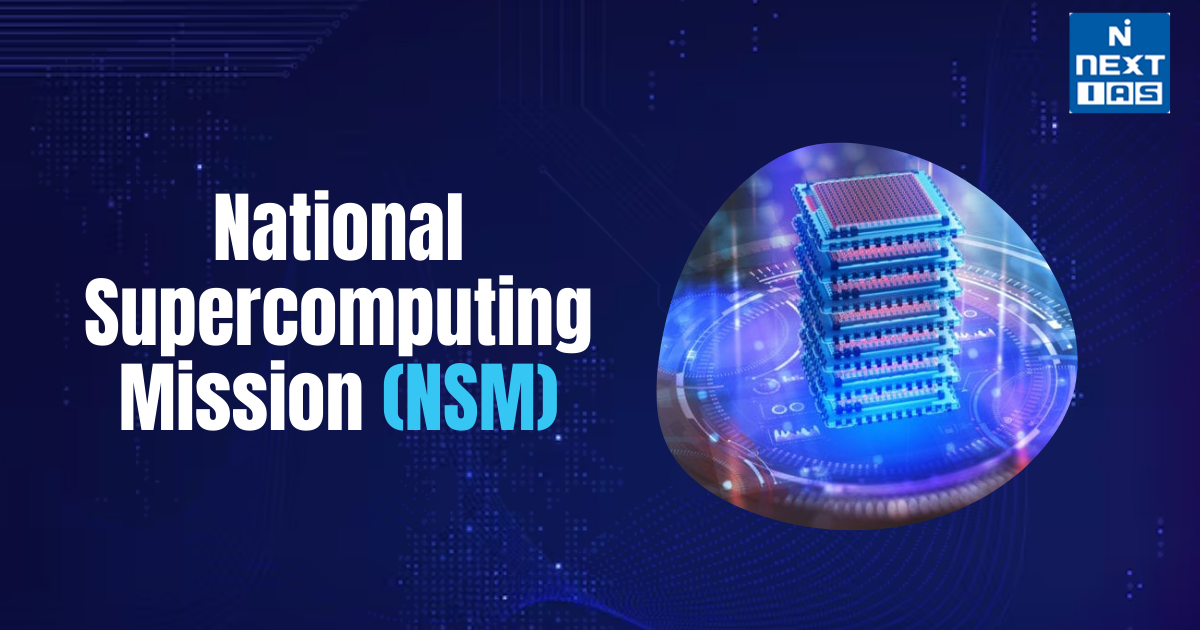
Genetic Engineering involves the manipulation of an organism’s DNA to alter its characteristics or functions. This technology holds significant potential for advancements in medicine, agriculture, and environmental sustainability. This article aims to study in detail the techniques, applications, and implications of genetic engineering.
About Genetic Engineering
Genetic Engineering definition is one of the core techniques of Biotechnology. It involves altering the chemistry of genetic material (DNA and RNA) to introduce these into host organisms and thus change the phenotype of the host organism.
Recombinant DNA Technology
- All organisms on Earth evolved from a common ancestor, so they use DNA as their molecule of heredity.
- At the chemical level, DNA is composed of the same chemical molecules for all organisms. DNA from different organisms can be “cut and pasted” together, resulting in “recombinant DNA”.
- The ability to cut, paste, and copy DNA molecules was a watershed moment for scientific research and spawned an entire industry built on genetic engineering.
- Recombinant DNA technology incorporates various steps in the same sequence as illustrated below:
- Isolation of the host DNA.
- Fragmentation of the DNA by restriction endonucleases.
- Isolation of desired DNA fragment.
- Ligation of the DNA fragment into a vector.
- Transferring the recombinant DNA into the host.
- Culturing the host cells in a medium at a large scale and extraction of the desired product.
Bioinformatics
- Bioinformatics is an interdisciplinary field that mainly involves molecular biology, genetics, computer science, mathematics, and statistics.
- It addresses data-intensive and large-scale biological problems from a computational point of view.
- The main tools of a bioinformatician are computer software programs and the internet.
- A fundamental activity is analysing the sequences of DNA and proteins using various programs and databases on the World Wide Web.
- Anyone, from clinicians to molecular biologists, with access to the Internet and relevant websites can now freely discover the composition of biological molecules such as nucleic acids and proteins using basic bioinformatic tools.
Stem Cells
- Stem cells have the remarkable potential to develop into many different cell types in the body during early life and growth.
- In addition, in many tissues, they serve as an internal repair system, dividing essentially without limit to replenish other cells as long as the person or animal is alive.
- When a stem cell divides, each new cell has the potential either to remain a stem cell or become another type of cell with a more specialised function, such as a muscle cell, a red blood cell, or a brain cell, as shown in the diagram below.
- Stem cells are distinguished from other cell types by two essential characteristics.
- First, they are unspecialised cells capable of renewing themselves through cell division, sometimes even after long periods of inactivity.
- Second, under certain physiologic or experimental conditions, they can be induced to become tissue- or organ-specific cells with unique functions.
DNA Replication
- DNA replication is the process by which DNA makes a copy of itself during cell division.
- The Parent DNA molecule consists of two polynucleotide chains held together by bonds of complementary bases.
- The enzyme ‘Helicase’ breaks the bonds between the polynucleotide chains of the parent DNA and another.
- Enzyme pairs new complementary bases with those of the parent DNA chain, forming two new Daughter DNA helixes.
DNA Transcription
- It is the synthesis of RNA from DNA. The flow of information from DNA to Protein takes place in two steps.
- The first step is transcription, in which RNA temporarily stores cell information and functions as a messenger RNA.
- It is a process used by the cell to regulate Gene expression. Transcription is carried out by an enzyme called RNA polymerase and several accessory proteins called transcription factors.
Translation
- It is the second step in the flow of information from DNA to Protein. In translation, Protein is synthesised from the information in the messenger RNA.
- During translation, a messenger RNA sequence is read using the genetic code, a set of rules that defines how an mRNA sequence will be translated into amino acids, which act as the building blocks of proteins.
- Translation occurs in Ribosomes, the factories of protein synthesis in our body.
Genome
- A genome is an organism’s complete set of genetic instructions. It contains all an individual’s hereditary information.
- Each genome contains all the information needed to build that organism and allow it to grow and develop.
- The instructions in our Genome are composed of DNA and each individual is altogether a unique set of Genome.
Transcriptome
- The human Genome comprises DNA, which consists of all the instructions needed to maintain cells.
- These instructions are laid down in four base pairs of DNA. DNA must be read or transcribed into RNA to carry out these instructions.
- These gene readouts are called transcripts, and a transcriptome is a collection of all the gene readouts present in a cell.
- The transcriptome is dynamic as the levels of RNA transcripts vary during different developmental stages or in response to certain conditions.
Transgenic Organisms/Genetically Modified Organisms
- “When a gene from one organism is purposely moved to improve or change another organism in a laboratory, the result is a genetically modified organism (GMO)”.
- It is also sometimes called “transgenic” for transfer of genes.
- Selective Breeding is a technique for the synthesis of GM organisms. In this technique, a plant with more desired traits is chosen and bred to produce more plants with similar traits.
- This process is often performed on crops to produce insect—or herbicide-resistant plants, called Genetically Modified Crops (GM crops). An example is Bt. Cotton.
DNA Fingerprinting/Mapping/Profiling
- DNA fingerprinting is a chemical test that shows the genetic makeup of any person. More than 99.9 % of the genome of two humans is exactly alike (100% if you are identical twins).
- But the tiny bit that does not make us physically and mentally different. DNA fingerprinting uses chemicals to separate DNA strands and reveal your genome’s unique parts.
- The results show up as a pattern of stripes that can be matched against other samples.
Plasmids
- Plasmids are circular deoxyribonucleic acid (DNA) molecules that replicate independently of the bacterial chromosome.
- They are not essential for the bacterium but may confer a selective advantage.
- Plasmids are extremely valuable molecular biology and genetics tools, specifically in genetic engineering.
- They are critical in gene cloning, recombinant protein production (e.g., human insulin), and gene therapy research.
Terminator Seeds
- These seeds are also known as “suicide seeds,” as the name suggests, they prevent farmers from re-planting harvested seeds, thus forcing them to buy new seeds every season.
- The Terminator seeds are genetically modified to render seeds sterile at harvest, which means the seeds produced cannot germinate further.
Mutation
- The mutation is a change that occurs in our DNA sequence. It can be caused by an anomaly in DNA replication or by environmental factors such as UV rays, pollution, and cigarette smoke.
- For example, sickle cell anaemia is caused by a mutation in the gene that instructs in the building of a protein called Haemoglobin. This causes the Red Blood Cells to become abnormal, rigid, and sickle-shaped.
Conclusion
In conclusion, genetic engineering offers remarkable potential to enhance our lives through advancements in various fields. While its benefits are significant, ethical considerations and risks must be carefully managed. As we continue to explore the possibilities of genetic engineering, responsible practices will be essential in maximising its positive impact on society and the environment.
FAQs
What is genetic engineering?
Genetic engineering is the direct modification of an organism’s DNA using biotechnology to alter traits. It enables gene addition, removal, or editing to enhance disease resistance, improve crops, or treat genetic disorders. Application of genetic engineering techniques like CRISPR allow precise DNA modifications, revolutionizing medicine, agriculture, and scientific research.
Who is the father of genetic engineering?
Paul Berg is known as the father of genetic engineering for his pioneering work in recombinant DNA technology. In 1972, he successfully combined DNA from different organisms, laying the foundation for genetic modifications. His research revolutionized medicine, biotechnology, and agriculture, leading to advancements like gene therapy and genetically modified organisms (GMOs).






